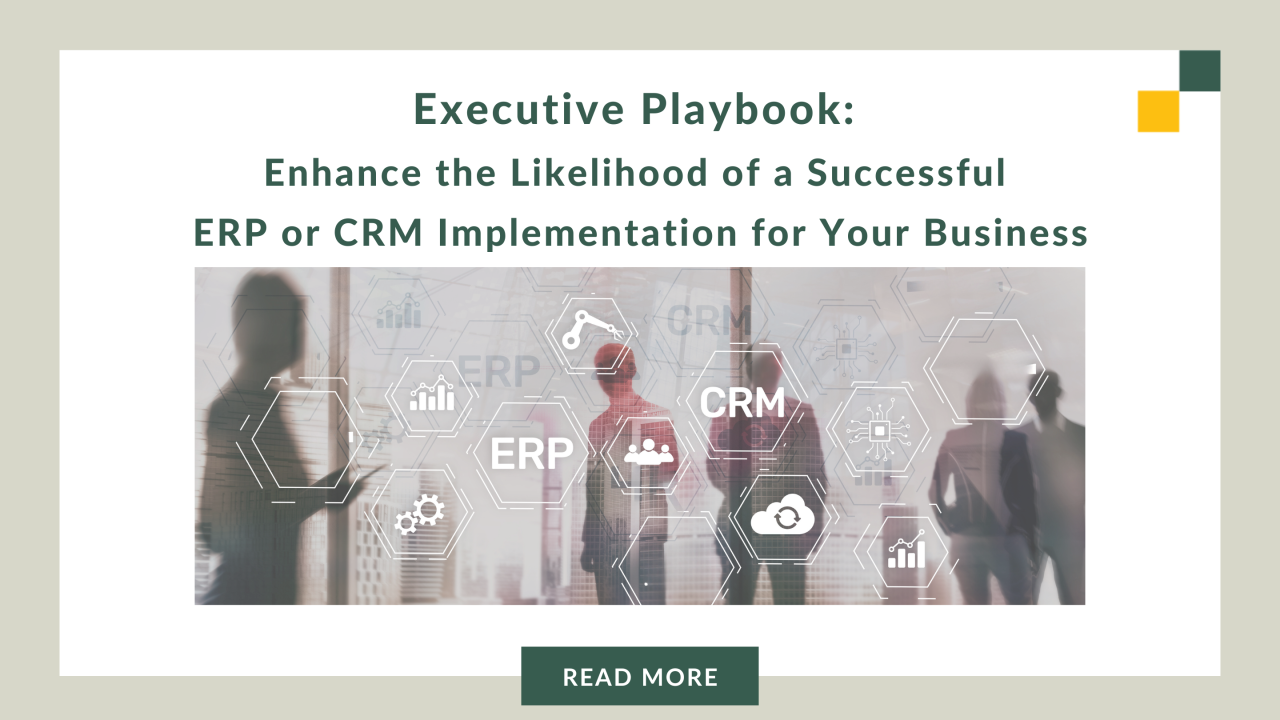Perhaps you’ve been through a Digital Transformation project before (examples: ERP upgrade, CRM implementation, etc.). If so, you recognize their potential benefits. You also know just how hard they are. And, if you’ve not been through one, recognize that these projects require many elements to fall into place to succeed. In either case, a realistic, comprehensive assessment of the conditions impacting your project is vital to a successful outcome. Most companies don’t take the time to do it. They should.
Readiness assessments are more about alignment among those leading and impacted by, and involved deeply with the upcoming project on key matters that will govern the way the project is carried out. It’s far more than the traditional 3 stools: scope, time, budget. It’s about clarity of outcomes, clarity of looming and real threats to successful implementation and adoption, project team composition and capabilities, commitments of resources and satisfaction of business needs. If these, and other project parameters are not considered early, the likelihood of failure is quite high. Moreover, if these parameters are not aligned on among the leadership of the organization – particularly if the project is highly impactful and transformational to broad elements of the business (departments, customers, vendors, partners, etc.) – then failure is almost assured. Multiple reputable research sources illustrate that these projects don’t achieve intended objectives over 65% of the time – often, it’s worse.
Readiness processes, like SL Business Informatics’ “SLBI Foresight” are best undertaken when projects are being rationalized and their business cases being justified. Although it’s never too late to ensure the project parameters are clear and aligned upon, the sooner this occurs, the better.
So many businesses undertake these expensive, disruptive projects (even the successful projects are both) without doing adequate preparation, it is shocking. We know this because we are introduced to many businesses seeking “better” from their current state of completely non-integrated, inadequately strategized, data-challenged systems environments which would all be, in aggregate, much more effective if they had done some strategic readiness and project planning well before engaging vendors. Don’t let this be your situation. And don’t rely on the vendors to force the issue before they start the project. They typically won’t. Recall, even the best vendors have sales and delivery objectives, which are different than your objectives – but the number of entities that have bought the quick, popular path of a “rapid install” are representing a rapidly growing number of unhappy, unsatisfied clients. We meet them regularly, after the fact. We urge you to think twice about measuring twice, before you make the “transformation” cut, so to speak. We’re here to help, too – send us an email at [email protected].
And, for reference – here’s a simple readiness “elements” checklist for you to consider:
- Executive team: Active, Sustained Buy-In
- Alignment, Approval: Decision Roles, Budget, Governance
- Clarity: Objectives, Requirements, Scope, and Impact
- Commitment: Funds, Personnel, Time, other Resources
- Outcomes: Clear, Measurable
- Risks: Clear, Managed
- Project team: Experienced, Familiar, Skilled, Available
- Transitional Change Management: Prepared Leaders, Champions
- Solution Vendors: Qualified, Capable, Accountable



